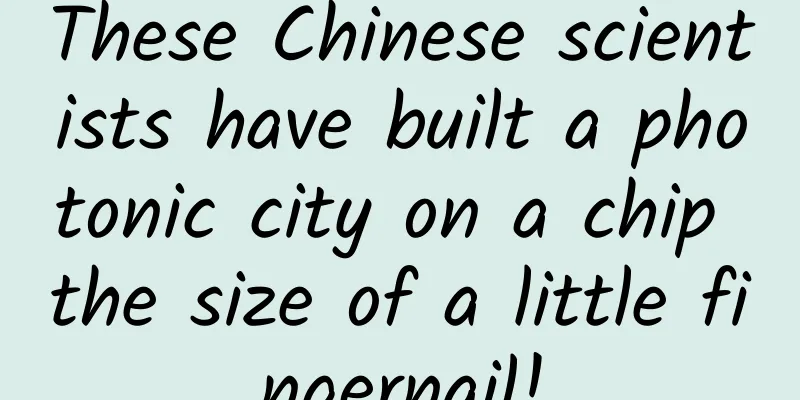1 in 10 people are affected! Why can kidney disease remain "invisible" for many years?

|
Chronic kidney disease (CKD) is a global public health problem. The latest epidemiological survey in my country shows that its prevalence is as high as 10.8%, equivalent to 1 in 10 people suffering from the disease, but the early diagnosis rate is less than 10%. The reason why kidney disease is called the "silent killer" is due to its three characteristics: strong compensatory mechanism, high hidden symptoms, and limited detection methods. This article will reveal the secret of the "invisibility" of kidney disease from four dimensions: medical mechanism, symptom identification, high-risk population and prevention and control strategies, and provide scientific response plans. 1. Kidney “supercompensation”: Why is early damage difficult to detect? 1. Powerful reserve function: - Each kidney has about 1 million glomeruli. Under normal circumstances, only 1/4 of them are in working condition, and the remaining 3/4 serve as "reserve troops". - When some glomeruli are damaged, the remaining glomeruli will compensate through high filtration and high perfusion to maintain basic renal function, and blood creatinine may still be normal at this time. 2. "Buffer period" for metabolic waste: - Symptoms will only appear when metabolic waste products such as urea nitrogen and creatinine accumulate to a certain level in the body, and this process may take several years. Data warning: When the glomerular filtration rate (GFR) drops to 50% of the normal level, blood creatinine will increase significantly; when it drops below 30%, patients will experience typical symptoms such as fatigue and loss of appetite. 2. Hidden symptoms: Five "disguisers" that are easily overlooked Early symptoms of kidney disease are often confused with other diseases, resulting in a misdiagnosis rate of up to 90%: 1. Foamy urine: - The presence of fine foam in the urine that is not easy to dissipate indicates proteinuria, but it may be mistaken for "heat" or "urinary tract infection". -Misconception: A negative urine test result does not mean no proteinuria. The urine microalbumin/creatinine ratio (UACR) needs to be tested. 2. Increased nocturia: - Urinating ≥2 times at night may be a manifestation of decreased renal tubular concentrating function, but it is easily attributed to drinking too much water before going to bed. 3. Fatigue and anemia: - Renal anemia causes tissue hypoxia, which manifests as fatigue and dizziness, but is often diagnosed as "sub-health" or "iron deficiency anemia." 4. Edema: - Mild edema of the eyelids and lower extremities may be ignored or attributed to lack of sleep or excessive salt intake. 5. Hypertension: - About 50% of hypertension is caused by kidney damage (renal hypertension), but patients often only focus on antihypertensive treatment and ignore kidney examinations. 3. Limitations of detection methods: Why can’t routine physical examinations detect early kidney disease? 1. Blind spots of urine routine: - Urinalysis tests detect "overt proteinuria" (>0.15g/24h), while early kidney disease manifests as microalbuminuria (30-300mg/24h), which needs to be confirmed by UACR or 24-hour urine protein quantification. 2. Lag of serum creatinine: - Serum creatinine is affected by factors such as muscle mass and diet. It only reflects late-stage renal damage and cannot provide early warning. 3. Disadvantages of imaging examinations: -Ultrasound or CT scans are difficult to detect early glomerular lesions, and renal biopsy is required to determine the pathological type. IV. Six high-risk groups favored by kidney disease 1. Diabetic patients: - Diabetic nephropathy is the primary cause of CKD, with an incidence rate as high as 30%-40% in patients with a disease duration of more than 10 years. 2. Hypertension patients: - Long-term blood pressure >140/90 mmHg can lead to renal arteriosclerosis and accelerate the deterioration of renal function. 3. Those with a family history of kidney disease: - Hereditary kidney diseases (such as polycystic kidney disease) tend to cluster in families, with the incidence in first-degree relatives 3-5 times higher than that in the general population. 4. Obese people: - The incidence of obesity-related kidney disease is increasing year by year, and visceral fat accumulation directly damages the glomeruli. 5. Long-term medication users: - Nonsteroidal anti-inflammatory drugs (such as ibuprofen), certain antibiotics, and traditional Chinese medicines containing aristolochic acid can cause drug-induced kidney injury. 6. Patients with recurrent urinary tract infections: - Chronic pyelonephritis can lead to renal interstitial fibrosis and eventually renal failure. 5. Breaking through the “invisible” dilemma: 3 key indicators for early screening 1. Urine microalbumin/creatinine ratio (UACR): - The "gold standard" for diagnosing early kidney disease, UACR>30mg/g indicates glomerular filtration membrane damage. 2. Estimated Glomerular Filtration Rate (eGFR): - Calculated based on blood creatinine, age, gender, etc., eGFR < 60ml/min/1.73m² is the diagnostic standard for CKD. 3. Renal Ultrasound: - Can detect renal structural abnormalities (such as renal atrophy, hydronephrosis), but has low sensitivity for early lesions. VI. Scientific prevention and control: from "passive treatment" to "active management" 1. Regular screening of high-risk groups: - Patients with diabetes and hypertension should test UACR and eGFR at least once a year. - It is recommended that the general population include urine routine and renal function tests after the age of 40. 2. Lifestyle intervention: -Control salt and limit protein: Daily salt intake <5 grams, and high-quality protein accounts for more than 50% (such as eggs and fish). -Control weight: Maintain BMI between 18.5-23.9 kg/m², waist circumference for men <90 cm, for women <85 cm. -Quit smoking and limit alcohol consumption: Smoking can increase the risk of kidney damage by 30%. Alcohol intake should be less than 25g/day for men and less than 15g/day for women. 3. Medication management: - Diabetic patients should give priority to the use of SGLT2 inhibitors (such as dapagliflozin), which can reduce the risk of kidney disease progression by 39%. - ACEI/ARB drugs are the first choice for patients with hypertension, which can reduce proteinuria and blood pressure at the same time. 7. Case warning: The cost of ignoring early signals Case 1: A 45-year-old male had a blood pressure of 150/100 mmHg during a physical examination and received no standard treatment. Five years later, he was diagnosed with renal failure due to lower limb edema and eGFR of only 35 ml/min. Case 2: A 30-year-old female had recurrent urinary tract infections that were not completely cured. Ten years later, she developed chronic pyelonephritis and eventually required dialysis treatment. Conclusion The "invisibility" of kidney disease stems from its physiological characteristics and the concealment of symptoms, but through scientific screening and management, it can be detected and intervened in the early stage. Remember: regular urine tests and kidney function tests are the first line of defense against kidney disease, and changing bad living habits is the key to prevention. |
Recommend
Will driverless cars replace taxis?
Ride-hailing app Uber announced yesterday that it...
If I am infected with HPV virus, will I definitely get cervical cancer?
As cervical cancer vaccines become more and more ...
How to play Baidu bidding ocpc second level
For SEMers who often play with small Baidu accoun...
A structure that a child can make has puzzled the mathematical community for 50 years
Not long ago, the famous mathematician Richard Ev...
Introduction to placing Wenchang Tower for people born in the Year of the Horse in 2020
2020 Horoscope for People Born in the Year of the...
7 simple ways to quickly understand user dads through online data
No matter what kind of marketing we do, we need t...
Let’s go to Yuntaishan!
In our impression Most of the mountains in northe...
How much does it cost to be an agent of Haikou Home Textile Mini Program? What is the price of being an agent of Haikou Home Textile Mini Program?
Why should you be an agent for WeChat Mini Progra...
Don’t take heel pain lightly, it may be caused by these 3 diseases!
This article was reviewed by Ao Rongguang, MD, Ma...
How to do bidding analysis? Share 4 major skills!
Competitive product analysis is one of the must-d...
Is your appearance plummeting? Maybe you have this disease.
Is your appearance plummeting? Maybe you have thi...
Paris has failed in its fight against rats time and time again. Will it choose to coexist peacefully with rats this time?
Paris is one of the cities in the world with the ...
Can plants catch a cold or have a fever? - Plant Attack and Defense
Produced by: Science Popularization China Author:...
6 Lessons for Rapidly Scaling Applications
While the COVID-19 pandemic is still having an ad...
Commonly used tool classes in Android development
As a new programmer, it's time to sort out so...









